Art of the Box Office Flop
The Lone Ranger cost $215 million to make. Directed by Gore Verbinski, produced by Jerry Bruckheimer and starring newcomer Armie Hammer with supporting roles from Johnny Depp and Helena Bonham Carter, Disney was positive its investment into the once established franchise would yield a lucrative return. But after opening night, The Lone Ranger only raked in $9.7 million. Ruh-roh, Silver.
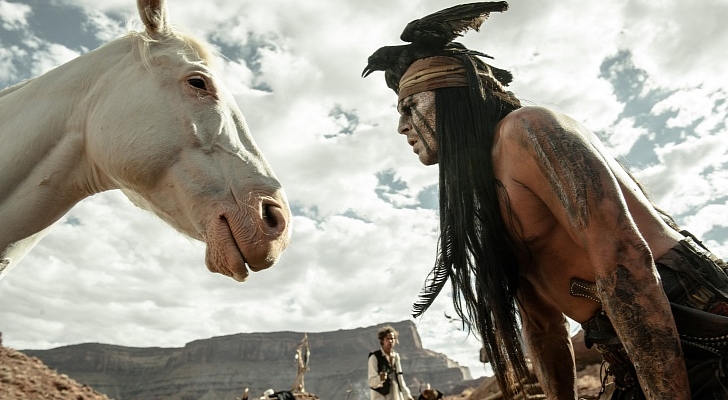
Since the July 4th weekend, The Lone Ranger has made around $49 million, and since most films face diminishing returns the longer they stay in theaters, it looks as good a time as any to call John Carter 2.0 The Lone Ranger a box office flop.
We may have been able to warn Disney that their hyper-excessive marketing strategy, obscure lead actor and their producer’s pension for Michael Bay levels of unnecessary spectacle may have hurt their chances, but they had no idea.
“The frustrating part for us is that we had all the ingredients here,” said Dave Hollis, Disney’s head of distribution. “You take a classic franchise, team the world’s most successful producer, an award-winning director and the biggest movie star in the world and you think your chances of success are pretty good. But we just didn’t make it work.”
To commemorate millions and millions lost on filmed mediocrity, I’ve set about deciphering the art of the box office flop. You know, beyond the fact that most of these movies just suck.
Setting The Stage
Box office flops are an anomaly. Millions of people will hand over buckets of money to watch Transformers 3, Pirates of the Caribbean 4 and Fast Five, so studios start believing people are sheep to be herded, sheered and left blinking, naked after experiencing the same cinematic experience over and over. And it seems to ring true enough. Hell, the Star Wars prequels are generic abominations, and they’re three of highest grossing movies ever made.

With these trends in mind, the risk seems minimal. People like special effects, famous actors and a plot that’s easy to digest, right? “Make it a remake or an established franchise, and they’ll practically beg us to take their money!” But the truth is, to the chagrin of movie executives everywhere, a little more complicated.
Wrong Parts, Wrong Idea
Green Lantern, Conan the Barbarian, and The Alamo should have worked. Green Lantern had a popular superhero, and Conan and The Alamo were remakes of beloved classics. Instead, they lost a combined $300 million.
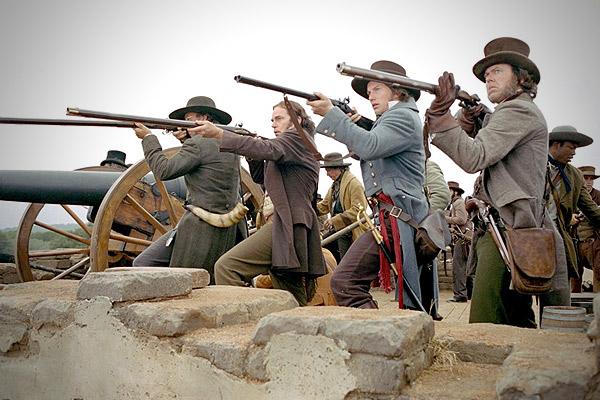
By all rights, each of these films should have been a success. The Green Lantern, for example, landed in the middle of Hollywood’s golden age for superhero movies. They had the franchise, they had the star (Ryan Reynolds), and they had the budget, but what they lacked was anything close to a decent idea/story.
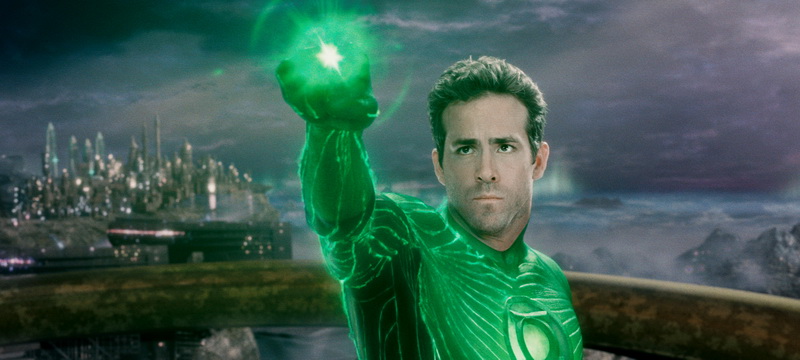
You see, “creative effort” isn’t quantifiable. There is no line-item for plot quality or clever dialogue, so it’s put on the back burner as an indistinguishable asset. This leads to budget allocations to special effects, reshoots and marketing campaigns prioritized over something as simple as an idea that will work.
But you can have a great idea without a digestible plot. Crouching Tiger Hidden Dragon was expected to fail, but it succeeded thanks to it’s strong, simple idea — evolved kung fu. In this case, the plot and subtitles didn’t matter to America audiences. What mattered was experiencing something we’d never seen before. Crouching Tiger Hidden Dragon took the cinematic experience we had grown accustomed to through films like Bruce Lee’s Enter the Dragon, and modernized it for a more visually demanding generation. It’s iconic because it had a new idea, and it worked.
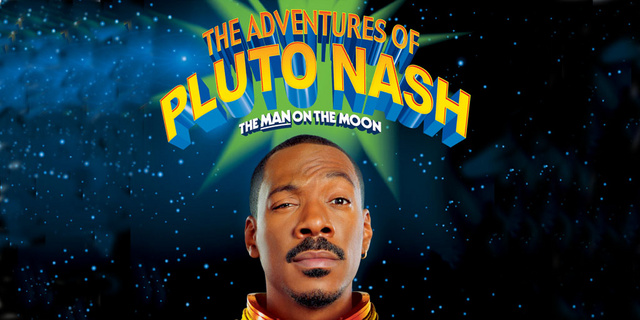
But if filmmaking was as simple as a great idea, John Carter, Sahara and Waterworld would have been hits. Instead, they fell apart thanks to their inconsistent parts.
Sahara was a fun adventure film which made $119,000,000 at the box office, but poor budget management lead to costs spiraling out of control during the $241,000,000 production. Waterworld had it’s own budget problems, but it’s failure came at the cost of identity — it didn’t know whether to be silly or serious. John Carter, with the highest Rotten Tomato rating for a flop, expected audiences to leap into his world because…well, they never really gave us a reason. Nobody knew the actors, nobody knew the franchise, and nobody knew even the slightest idea what it was about or why a white guy could jump like the Hulk. Which leads us to the importance of the sell…
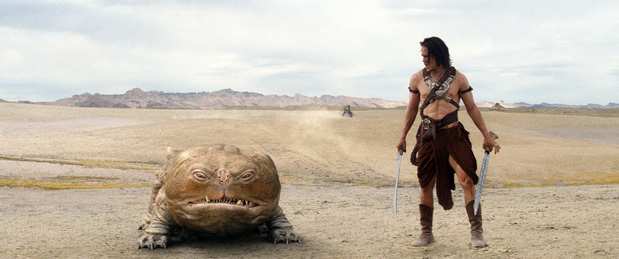
Fumbling The Sell
You know it, I know it, your father knows it, but major studios don’t — excessive marketing can murder a movie. As the medium for most film advertising, trailers are supposed to function as a film’s pitch to an audience. They serve as a little sneak peak into the experience your $11.25 movie ticket could buy. Naturally, we want a taste of the movie before we fork over our cash, but just as naturally, we do not want bombarded with an overflow of the same trailer with the same scenes every single time we turn on the television. Unlike the unusual case with John Carter, some of the worst box office flops happened because 90% of the population had seen the only decent parts of the movie on repeat 342,309,412,831,238,740,124 times during commercial breaks.
Not as often, but equally wounding, is the movie trailer that shows you everything. You know, the one that gives away the entire plot. “Welp, no need to see that one now,” says John Doe, a perfectly willing consumer who just watched the plot of Drinking Buddies mashed into 2 minutes and 26 seconds of spoiler territory. Especially as a PorchDrinking enthusiast, this movie had me convinced just thirty seconds in. Make it past two minutes, and congratulations, you’ve seen Drinking Buddies, the soon-to-be almost hit of 2013.
Take a moment and consider how little you saw of The Blair Witch Project or District 9 before they hit theaters. These brilliant movies introduced us to the plot/themes of their respective films not by shoving the best scenes down our throats, but with a few viral videos and fliers. That’s it. They didn’t need to show us if the good guys win, what a CGI explosion looks like or the protagonist’s entire character arch. They just whet our appetites for something we hadn’t seen before.
A Mess is A Mess is A Mess
Sometimes a flop comes about due to budget mismanagement. Sometimes it’s due to poor publicity. Sometimes a movie fails because producers put business tactics before filmmaking practices, and other times it’s just released at the wrong time. However, there comes a special moment when a movie fails because it’s an unfathomable, colossal mess.
These are my favorite kind of flops. They’re the kind of film you can catch a glance of from a mile away and quickly know it’s an awful, ungodly creation. Take Battlefield Earth, for example.
With a budget of $100 million, it’s hard to fathom how something like this ended up as a finished project, but it did. It’s true that more often than not, terrible films end up tricking enough customers into watching it enough to make back some money, but when something truly terrible bombs this hard, it’s thanks to a shining beacon of democratic justice in the film industry: word of mouth.
Entertainment is the return audiences expect on their movie investment, and when it turns sour, so do they. Ben Affleck’s disaster Gigli had all the right ingredients to, if nothing else, con some edgy rom-com enthusiasts into watching him and J-Lo get kissy on screen. However, as soon as the first hundred or so viewers realized how wretched it was, they let everybody know it before others made the same 121 minute mistake.
Word of mouth has also been know to help as much as it hurts. Momento and Slumdog Millionaire are now considered great films, but studio executives didn’t have the same faith audiences had. After all, Momento only opened in 11 theaters, and Slumdog Millionaire was set for a straight-to-DVD release. Thanks to supremely positive word of mouth, Momento ended it’s run with more than 500 screens and two academy awards. Slumdog did pretty well too, I guess.

Box office flops are fascinating creatures. Not only do they represent the nadir of cinematic achievement, but also the consequences of studio hubris, idiocy put before creativity, and a complete lack of faith in audiences worldwide. Their failure echoes throughout Hollywood, haunting studio executives and reminding them that sometimes, just sometimes, audiences aren’t sheep. They’re sharks.
-
I have to imagine a lot of the reason Lone Ranger flopped was their HUGE CGI budget. I love ILM, but they’re best when they’re creating new worlds – they’re the geniuses who created the land/spacescapes of Star Wars. But in Lone Ranger, they just made the desert look…. more… desert-y. Blown out gray, beige, brown, and white color schemes. Making horses look like they’re flying through the air – for no reason.


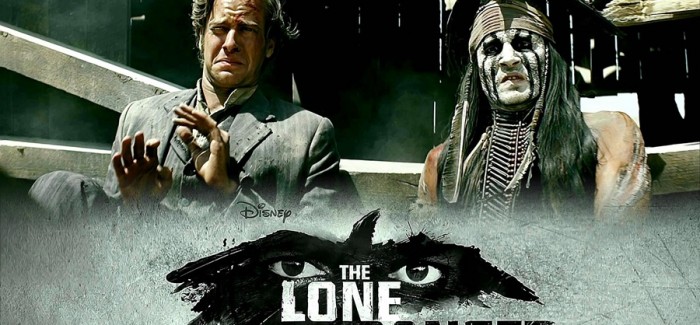
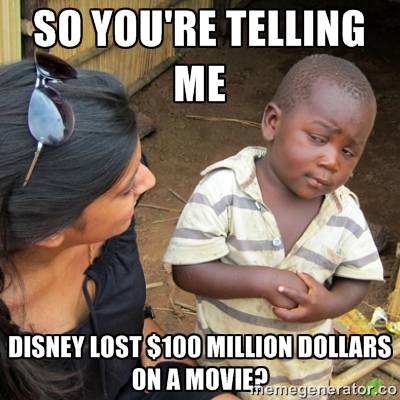

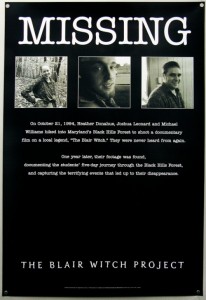


Comments